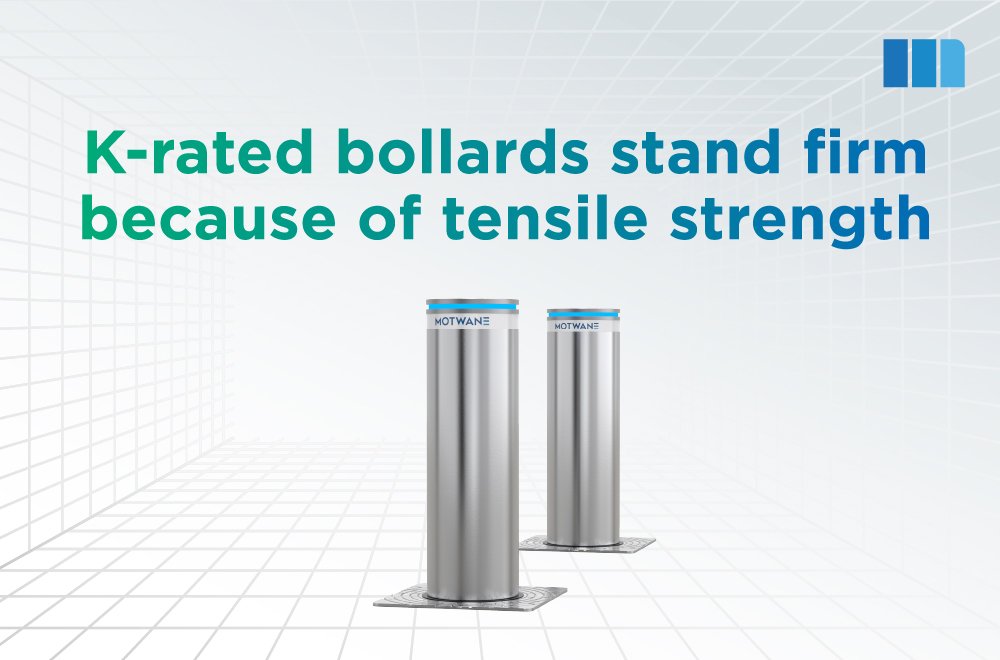What Tensile Strength Means?
• Tensile strength is the maximum stress a material can withstand while being stretched or pulled before breaking.
• In steels used for bollards, this is usually expressed in MPa (megapascals).
• It reflects how resistant the steel is to forces trying to elongate, deform, or fracture it.
Use of Tensile Strength in Bollards?
1. Crash Resistance
• Bollards (especially K-rated / crash-tested) must stop or slow down a vehicle on impact.
• High tensile strength steel ensures the bollard absorbs energy without tearing apart under sudden load.
2. Structural Integrity
• Prevents necking or brittle failure at the point of impact.
• Ensures bollards deform in a controlled way, rather than snapping.
3. Material Selection
• Designers choose steels with the right tensile strength for the required crash rating (e.g. Higher-grade steels).
• For high-security bollards (K4, K8, K12), higher tensile strength steel is essential to withstand large kinetic energy from trucks.
4. Safety Margin
• Even if bollards bend after impact, tensile strength ensures they don’t rupture catastrophically, protecting pedestrians, buildings, and assets.
🚚 Example in Practice
- A K4 bollard must stop a 7.2-ton truck at 48 km/h.
- The material’s tensile strength helps determine:
- How deep the bollard must be embedded.
- How thick the steel wall must be.
- Whether it will stop the truck with controlled deformation or fail.
✅Tensile strength in bollards ensures they can withstand extreme pulling and stretching forces generated during vehicle impact, making them reliable crash barriers instead of weak posts that would snap or shear off.




